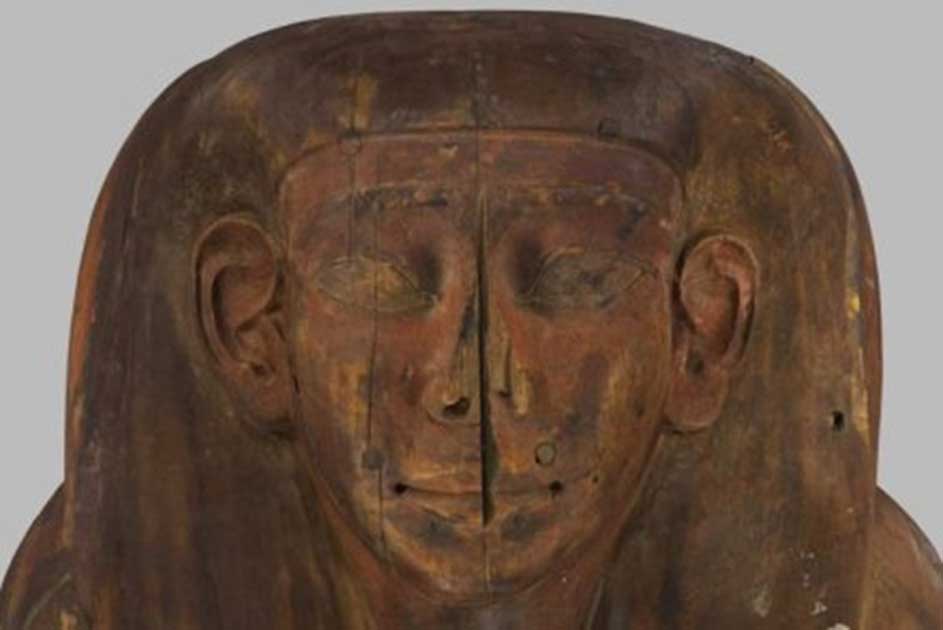Empty Ancient Egyptian Coffin in Sydney Museum Is Not Actually Empty
This 2,500-year-old ancient Egyptian coffin has sat, mostly ignored, in a museum for 150 years. But when someone finally decided to take a peek inside the rather plain-looking artifact last year, they were surprised – there were mummified remains inside the coffin labeled as “empty”.
Now researchers are excited about future possibilities as they go about unravelling the mystery of the individual left inside the sarcophagus. As the investigation leader Dr. Jamie Fraser told ABC News, “We are about to start a really detailed project to scientifically investigate these remains in the coffin and ask a whole bunch of questions, but really, ‘Who is inside the coffin?’”

Mixed remains within the coffin. (Nicholson Museum Nicholson Museum)
Dr. Fraser told BBC News that the coffin has hieroglyphics on it dating back to 600 BC which state it was made for a priestess or a worshipper named Mer-Neith-it-es. That doesn’t mean the human remains are hers though – mummies are known to have been removed or changed between coffins in the past and an Egyptian antiquity seller would sometimes “replace” the missing mummy with another if a customer asked.
- Rare scenes on ancient Egyptian coffin reveal influence of Persian Empire occupation
- Surprise finding as ancient Egyptian sarcophagus is found in Israel
It is worth noting here that the human remains in this case are not a full mummy. BBC News reports that only 10% of the body was found. The individual’s feet and some other bones are all that have survived the passage of time…and looters. Dr. Fraser told ABC News, “A tomb robber has probably come in and rooted all the way through trying to find jewels and amulets.”
But Egyptologist Dr. Connie Lord, the one in charge of the physical examination, hopes that some respect will finally reach the person who was laid to rest inside it. She said, “Little by little this excavation is really telling us more about the person in the coffin and hopefully give it some dignity that it lost when in ancient times it was looted so badly.”
To date, the researchers have completed computed tomography (CT) scans and physical examinations on the contents of the coffin. The scans showed remnants of bones, bandages, resin, and over 7,000 beads – probably from a funeral shawl.

A shot from the CT scan showing the mummy’s toes. (ABC News)
Radiologist Professor John Magnussen said the bones belong to someone who died, “older, and it's got some early degenerative changes and the sacrum is fused, so we know it's definitely an adult.” It is probable that the person was over 30 years old. Dr. Fraser hopes radiocarbon testing will show the person died around 600 BC, making it more likely “that this person belongs to the coffin and, if it is a woman, it is likely Mer-Neith-it-es.”
While completing the physical examination, Dr. Lord made a surprising discovery, it seems resin was poured into the person’s skull following the removal of the brain. She explained the significance of the find to ABC News, saying that the cast looks similar to what was found in Tutankhamun’s sarcophagus. Dr. Lord said, “It could tell us so much. It's just an incredible find, I don't remember anyone finding something like this. It would have to be incredibly rare.”
- 3,000-Year-Old Egyptian Fingerprints found on Coffin Lid
- Ancient Egyptian Couple Underwent Different Mummification Practice that Preserved their Organs
Physical tests such as what have been done on the 2,500 year old remains are not said to be a common practice on complete mummies these days. But Dr. Fraser feels that it is appropriate under these circumstances, “In this case we can't do anything to the remains that the tomb raiders haven't already done. In fact, by doing this process of excavation we can stabilise the remains and conserve them properly.”

The remains from inside the ancient Egyptian coffin. (MACQUARIE MEDICAL IMAGING)
It is expected to take months or maybe even years until the scientists can identify the human remains with some certainty, but they’ll never be able to be 100% positive. Meanwhile, the sarcophagus which was forgotten for 150 years will hold a different place of importance. The Mer-Neith-it-es coffin is going to be put on display beside others in a new museum at the university in 2020. There are also plans to have a display alongside the coffin showing the researchers’ progress.
The ancient Egyptian coffin filled with archaeological interest is one of four in the Nicholson Museum at the University of Sydney in Sydney, Australia. This is the oldest university museum in Australia and it houses the largest antiquities collection in the Southern Hemisphere. The museum was founded in 1860 as a home for the private collection of Sir Charles Nicholson, the University’s second chancellor. It has grown to hold some 30,000 artifacts from Egypt, Greece, Italy, Cyprus, and the Near East.
Top Image: This ancient Egyptian coffin was not empty. Source: ABC



















